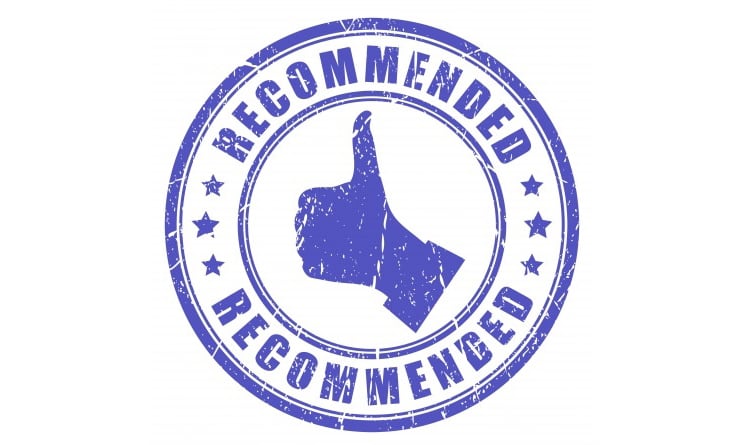What Do Product Recommendations Stand For?
The early forms of product recommendations date the back to mid-90s. The ancestor of product recommendations in today’s eCommerce is the “Customers who bought this item also bought” kind of book recommendations on Amazon.com.
The underlying math that makes product recommendations on Amazon possible is the “item-to-item collaborative filtering” algorithm. As we may all guess, Amazon today makes use of many algorithms and test several personalization technologies. All these efforts translate into sales. 1/3rd of Amazon’s revenues is attributable to personalization.
What Is the Difference Between Personalization and Product Recommendations?
Product recommendations are a tool that is used by eCommerce merchants so that they could deliver a more personalized experience to their customers. The basic forms of recommendations do not include any element of personalization while the advanced forms are capable of displaying a different set of recommendations for each and every single user.
Why Do Online Stores Need Product Recommendations?
Because there is no sales rep! The answer is that simple. While the brick and mortar stores employ talented sales reps who can do “instant shopper profiling” just as a potential customer enters the store and then use this “human intelligence” to recommend the best products to that shopper, the online stores lack that kind of a capability. The sales rep is obviously one of the biggest sales weapons that a physical retail store might have. They convince the shoppers to make a purchase. In some cases, they ensure that cross selling or up-selling does happen in the sense that the rep convinces the shopper to buy a higher priced item or an extra item that’ll go with the original item that is bought. Sales rep’s activities increase the likelihood of purchase and help the store make more sales.
On the other side, the eCommerce websites are very powerful in terms of user profiling and segmentation as they have "clickstream" and “transactional” data. Even on a small online store, thousands of clickstream behavior happens each month. It is possible to transform these interactions into sales.
How Can Clickstream Data Help Product Recommendations
Online shoppers spend at least nine minutes during a visit to an eCommerce site. They usually view 4-5 pages before they leave the website. If they decide to add an item in their carts, the duration of the shopping session increases. 2-3% of all visitors end up making a purchase, online. All of these customer interactions are translated into clickstream data and used as a reference to recommend products. The basic proposition works like this; if visitor A views/buys item X and visitor C also views/buys item X, recommend what visitor A has viewed/bought to visitor C.
An Introduction to Product Recommendations Plugins
Today it is possible – even for the small online stores – to make use of the product recommendations. If you have an online store, you could easily install a product recommendations plugin from Perzonalization and boost your sales while your visitors enjoy a personalized experience on your store.
The recommendations plugin works both on the website and the e-mails sent to customers. Every clickstream and purchase data is tracked and analyzed in real-time by Perzonalization’s AI powered personalization engine in order to come up with recommendations that are tailored to each individual.
An online store typically has the below site structure:
- Homepage
- Category / Collection page
- Product page
- Cart page
- Successful sales page
- Search results page
- Pages such as contact, company, blog
It is possible to display product recommendations – in the form of a plugin – on all of these pages. You – as the owner of the eCommerce site – have the chance to select which algorithmic rule to apply on the recommendations. You may want to showcase “popular products”, “recent products” or Perzonalization’s special feature that is called “products viewed by the similar shoppers”. You even have a chance to decide on your own rules – choose which categories, colors, seasons, sizes, price ranges of items you’d like to display on the product recommendations area.
Emails are also known as the great tools of personalization in the sense that the recipients of the emails are not ordinary visitors of your online store. They are the people who have seen such a value in your offering that they cared to sign-up for your site. They usually have a long and sophisticated behavioral history on your site. As a personalization engine knows more about an email recipient, it is easier to display personalized recommendations on emails and ensure repeat purchases.
How To Measure The Performance of Product Recommendations?
Whenever a visitor clicks on a recommended item and buys that specific item, this is considered to be recommendations revenue. Product recommendations have a potential to increase an eCommerce websites revenues by 15%. The recommendations on emails also ensure repeat purchases and increase loyalty. This is in turn translated into the lower churn.
What Do I Need To Start Using a Product Recommendations Plugin On My Store?
If you’re using Magento, Shopify, OpenCart, PrestaShop or WooCommerce, you’re all set. You just need to download and install Personalization with a single click. During the free trial period of 14 days, you’ll have a chance to play with the design, add custom recommendations on your pages and send e-mails with product recommendations.
Personalized product recommendations have the ability to revolutionize online stores to extents we can’t imagine. This is mainly because the future of online retail is solely based on improved user experience.
Related Posts
What Digital Marketers Need to Understand About Their Target Audience
How to Boost Your Online Store Business
What Small Business Owners Should Know About Online Marketing
